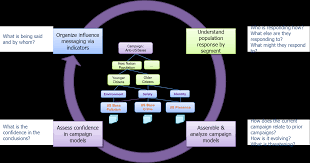Pandemics may threaten both internal and external national security – the physical threat to U.S. citizens in terms of morbidity and mortality, and the decreased effectiveness of U.S. armed forces in protecting those citizens from external threats. The economic, political or social turmoil in adversary country is also potential threat. …
Read More »Yearly Archives: 2022
Quantum microwave photonics
By harnessing quantum superposition and entanglement, remarkable progress has sprouted over the past three decades from different areas of research in communication, computation and simulation. Microwave photonics (MWP) typically using classic optical methods and devices to generate, transport, and process radio-frequency (RF) signals is a recently developed area of …
Read More »5G Mobile Networks deployments have many security and privacy threats, Require New policies and technologies including quantum cryptography
Countries are now racing to deploy 5G, short for 5th generation mobile networking or 5th generation wireless systems. The Fifth Generation (5G) mobile networks promise fast Internet for everyone, smart cities, driverless cars, critical health care, “internet of things” revolution, and reliable and secure communications for critical infrastructures and services. The …
Read More »Sustainable Management of Construction and Demolition (C&D) Materials
Construction and demolition (C&D) materials are generated when new building and civil-engineering structures are built and when existing buildings and civil-engineering structures are renovated or demolished (including deconstruction activities). Civil-engineering structures include public works projects, such as streets and highways, bridges, utility plants, piers, and dams. C&D materials often …
Read More »DARPA INCAS will exploit social media, messaging & blog data to track geopolitical influence campaigns
With billions of people around the world accessing platforms such as Facebook, WhatsApp, Twitter, and Instagram, to name a few, social media has become a powerful force for political and cultural change, and a force that is more than capable of influencing global geopolitics. In the past three years alone, …
Read More »DARPA ‘s PROTEUS urban combat software allows Marine commanders to explore and develop new multidomain fighting concepts
Cities have become the new battleground and Hybrid or Urban Warfare the greatest threat being waged by ISIS to Boko Haram to Hamas to Ukraine rebels. Urban warfare is fundamentally unchanged since World War I in many regards: battle is human-centric, with most casualties resulting from discovering the enemy; a …
Read More »DARPA advances Microwave Photonics for RF signal processing and radars
The military/defense industry continues to encourage the advancement of multifunctional receivers. Yet the demands for higher-frequency operation, increased bandwidth, increased dynamic range, and enhanced sensitivity creates unique design challenges for present technology. Size, weight, power, and cost (SWAP-C) dynamics heavily influence the military/defense industry’s value for a particular technology. …
Read More »Self-healing materials for military for armor system providing blast and ballistic protection
Generally, materials will degrade over time due to fatigue, environmental conditions, or damage incurred during operation. Repair of certain materials during their lifecycle (especially those with structural functions such as concrete) can be very expensive and labour intensive. Therefore Scientists began developing self-healing materials , those artificial (synthetic) substances that …
Read More »India, Israel and the U.S. Trilateral collaboration can result in innovation superpower to counter China
The Organization for Economic Co-operation and Development (OECD) defines innovation as, ‘the implementation of a new or significantly improved product or process, a new marketing method, or a new organizational method in business practices, workplace organization or external relations. The impact of innovation on the growth and development of a …
Read More »Growing threat of Cryptocurrency in terrorism for terror financing
Modern terrorist attacks display increasingly sophisticated ICT skills in both conducting their attacks and communicating them globally through digital technologies, combined with, in some cases, an awareness of counter-intelligence measures, largely enabled by Web 2.0. The Paris attackers displayed the most sophisticated use of these, including so-called Dark Web platforms …
Read More » International Defense Security & Technology Your trusted Source for News, Research and Analysis
International Defense Security & Technology Your trusted Source for News, Research and Analysis






